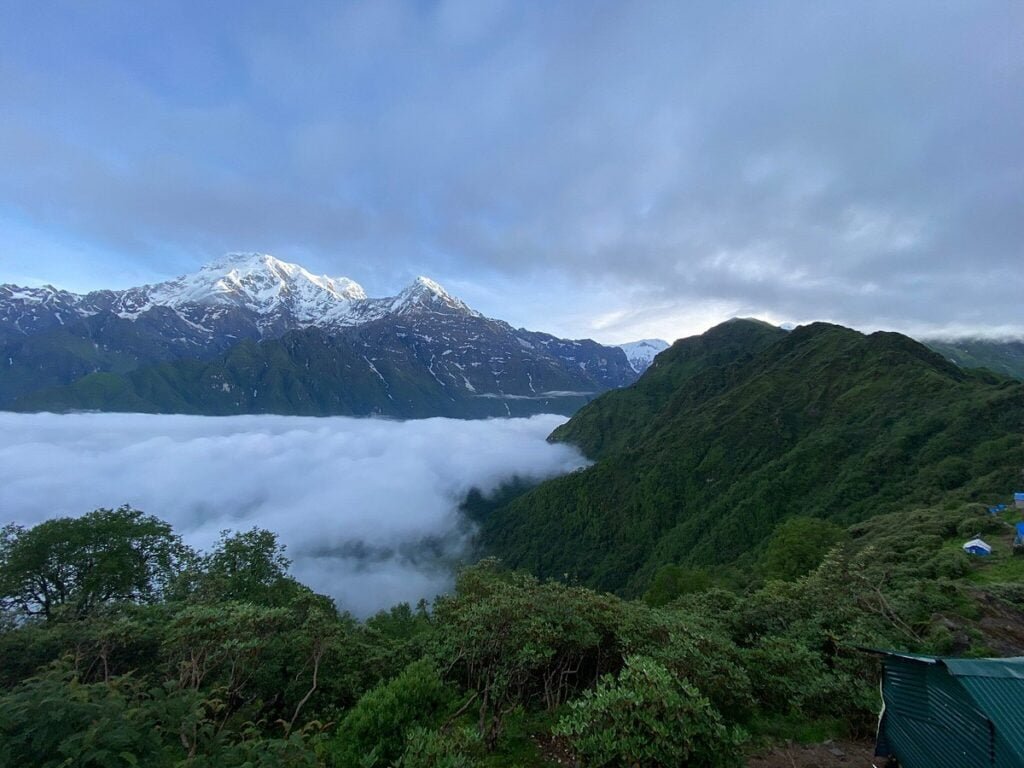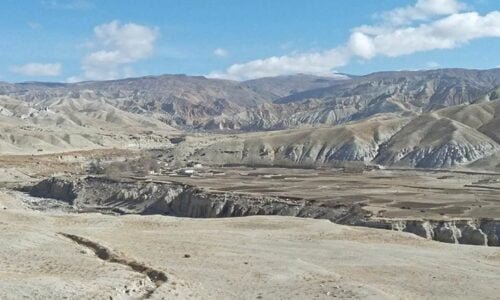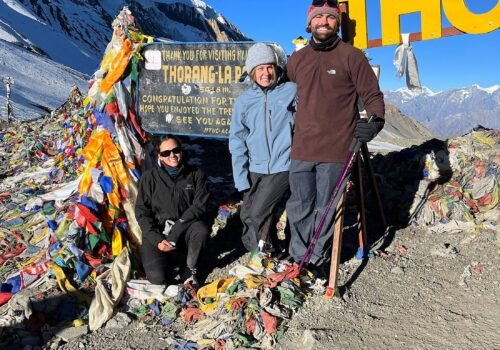Complete Guide to the Mardi Himal Trek
15 May 2025 5 min to read

One of the shortest and beautiful treks in the Annapurna region is the Mardi Himal Trek. The lovely natural surroundings, along with the phenomenal mountain vistas, enhance this trek’s beauty. The lush valleys, alpine meadows, and dense forested trails offer a memorable trek experience. The highest point, High Camp, offers Scenic Mountain views, including the world’s tenth-highest Annapurna. Here is a complete guide to the Mardi Himal trek to make your trek journey enjoyable.
Why Choose the Mardi Himal Trek?
Short yet rewarding trek: This trek is short yet rewarding, offering a more intimate connection with nature.
Pass through diverse landscapes: Trek across lichen-laden dense forests, shifting from lush valleys to serene alpine meadows.
Diverse ethnic groups: The diverse ethnic groups’ settlements give insight into their local culture, tradition, and lifestyle.
Cultural Immersion: The cultural immersion through the Himalayan lifestyle and interaction with locals helps to gain insight into their daily routines and cultural heritage.
Panoramic mountain views: Witness phenomenal panoramic mountain vistas such as Mardi Himal, Annapurna, Lamjung, Hiunchuli, etc., and its surrounding beauty.
Also Read: 5 Short Annapurna Region Treks
Key Information at a Glance
Maximum Elevation: 3,550 m (High Camp)
Physical Grading: Moderate
Best Seasons: Spring (March-May) & Autumn (September-November)
Accommodation: Basic teahouses along the trail
Meals: Full board during the trek (healthy, hygienic meals)
Permits Required: Annapurna Conservation Area Permit (ACAP), Machhapuchhre Rural Municipality Permit, and Trekkers Information Management System (TIMS)
Trek Route:
Phedi – Deurali – Forest Camp – Low Camp – High Camp – Siding Village

Day-to-Day Short Overview
Day 01: Kathmandu arrival (1400 m)
Arrive in Kathmandu, get welcomed by the representative, and transfer to the hotel.
Day 02: Drive to Pokhara via tourist bus (822 m)
Admiring the surrounding scenery, drive to Pokhara, which takes 7-8 hours.
Day 03: Drive to Phedi (1130 m), trek to Deurali (2100 m)
Drive to Phedi and start trek to Deurali of Pothana village.
Day 04: Trek to Forest Camp (2500 m)
Walk past the rhododendron forested trail to Forest Camp.
Day 05: Trek to Low Camp (3050 m)
Pass through forested trails, admiring the mountain scenery, to Low Camp.
Day 06: Trek to High Camp (3550 m)
Trek to High Camp via Badal Danda and adore theamazing views ofMardi Himal, South Annapurna, Machhapuchhre, Hiunchuli, etc.
Day 07: Trek to Siding (1945 m)
Descend to Siding, admiring the beautiful surroundings.
Day 08: Drive to Pokhara (822 m)
Return to Pokhara, which takes about 3.5 hours.
Day 09: Drive to Kathmandu (1400 m)
Drive to Kathmandu after completing the Mardi Himal trek.
Day 10: International departure
Transfer to the airport for an international departure.
Suggested: Khopra Danda Trek

Accommodation and Meals
Teahouses offer accommodations with twin-sharing rooms and healthy and hygienic meals. Washrooms are mostly outside the teahouses. Traditional Nepali dishes, with limited Indian and continental cuisines, are food choices. Mineral water bottles or boiled water are available for drinking.
Preparation and Fitness
Mardi Himal is a moderate trek that takes you to the maximum elevation of 3,550 m (High Camp). It demands that the trekkers be both physically and mentally fit. We suggest participating in exercises focusing on hiking and endurance before commencing the trek. Strictly following the guidelines, following acclimatization schedules, and staying hydrated proves beneficial during the trek.
Gear and Packing List
Warm clothing: Insulating layers, down jackets, trekking pants, thermals
Trekking boots: Durable, waterproof boots
Sleeping bag: Suitable for temperatures as low as (-5°C)
Accessories: Sunglasses, sunscreen, hats, trekking poles, headlamps, and a water purification system
Permits and Fees
The Mardi Himal trek requires three compulsory permits.
Annapurna Conservation Area Permit (ACAP)
Foreigners- NPR 3000/person
SAARC- NPR 1000/person
Machhapuchhre Rural Municipality Permit
Foreigners- NPR 500/person
Trekkers Information Management System (TIMS)
Foreigners- NPR 2000/person
SAARC- NPR 1000/person
Diplomats/Foreign Officials & their families- NPR 500/person
Best Seasons to Trek
The Mardi Himal trek is possible to do in all seasons, which offers varied experiences. However, Autumn (September to November) and Spring (March to May) seasons are best as there is stable weather and moderate temperatures. It offers clear views and comfortable walking trails. The blooming flowers during the Spring and the festive season vibes during the Autumn are enchanting.
The Winter and Monsoon season treks are unpleasant due to the slippery trails and unfavorable weather. However, trekking is possible with proper planning and preparations.
Also Read: Machhapuchhre Municipality Permit Compulsory for Mardi Trek
Conclusion
A complete guide to the Mardi Himal trek includes all the information to make your trek plans easier and effective. Mardi Himal trek in the Annapurna region is a seamless blend of nature and culture. The towering peaks, lush green valleys, locals and their culture, and diverse landscapes make Mardi an unmissable trek destination.
Frequently Asked Questions
How long is the Mardi Himal Trek?
The Mardi Himal trek takes around 7 to 9 days to complete.
Do I need a guide for the Mardi Himal Trek?
A licensed guide is mandatory, and it is highly recommended for the Mardi Himal Trek.
Can I do the Mardi Himal Trek independently?
An Independent Mardi Himal Trek is strictly prohibited.
Are there any age restrictions for the Mardi Himal Trek?
There are no age restrictions, but we still recommend parental guidance for children below 16.
Are there any alternative routes or side trips on the Mardi Himal Trek?
Some popular side trips on the Mardi Himal Treks are the Gurung village of Landruk.
Are there ATM facilities available along the Mardi Himal Trek?
There are no ATM facilities on the Mardi Himal Trek route. We highly suggest carrying enough cash (in Nepalese rupees) to cover your expenses throughout the trek.
Are there any communication facilities available during the Mardi Himal Trek?
There are limited communication facilities, such as mobile network coverage and Wi-Fi, along the Mardi Himal Trek.
Can I extend or customize the Mardi Himal Trek?
Yes, the Mardi Himal Trek can be extended or customized, and consult with a trekking agency for it.





